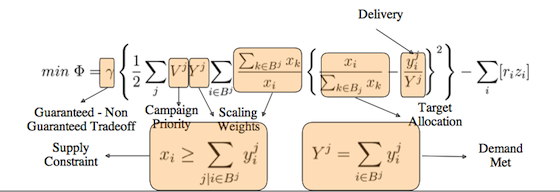On Monday, the new self-regulation magical “icon” that is designed to make the online ad industry’s privacy problems disappear will be unveiled. A new group called the “Digital Advertising Alliance” will unveil the icon-based plan–all timed to help head-off the kinds of protections and safeguards consumers require. The current financial crisis affecting tens of millions of Americans require that government and big business groups do more than pay digital lip service to consumer protection.
As a kind of litmus test for the new self-regulation effort, see if the icon and the information connected to it really informs you about how data on you is collected and used for profiling, tracking and targeting. For example, last week, the Interactive Advertising Association (IAB), one of the key backers of the new Alliance, released a guide to targeting consumers at the local level. Here’s excerpts of what they say. See if that little icon is being honest when you click it. Of course, we really require rules that eliminate the kind and amount of data that can be collected on you and you family and friends in the first place–as well as honest disclosure on the process. Note as well that all that data on you is expensive–and others are cashing in on information that belongs to you! From the new “Targeting Local Markets” guide:
Explicit profile data Targeting. definition–
Explicit data is “registration quality data†collected either online or offline. For online registration data, the user has certain attributes in his or her registration profile at a particular site or service, and that data is associated with the user’s Web cookie or some sort of audience database when the user next logs in. Offline registration data includes the sorts of data held in the massive offline direct response industry databases built up over the last several decades. These are then matched to a user online when that user logs in somewhere that is a partner of the data company. The site at which the user logs in, usually an online mail or similar site, sends the name/email combination to the data company, which then makes the match and sends back data…pricing–In general, first party data commands a far more variable premium than third party data…Third party data is usually available in much larger quantities, and yet there is often a fee of anywhere between $0.50 to $2.00 or more paid to the data provider by the ad seller – thus increasing the cost of goods sold (COGS) on the ad, and therefore increasing the price…
Behavioral Targeting (Implicit profile data Targeting)-definition-
Behavioral Targeting is the ability to serve online advertising based on profiles that are inferred from an individual user’s technical footprint and viewing behavior…As the medium has grown from a “browsing†experience to interactional so have the levels of information gathered. Newer forms of information include the data collected about influences, social preferences through social networks and an individual user’s content created online…The data is often gathered in real-time and can be used for real-time decision-making so that relevant advertising can be delivered dynamically to an individual user during their online session…Behaviorally targeted advertising commands a higher price because of targeted placement versus general run-of-site (ROS) advertising…Behavioral Targeting can be highly accurate when the user is leaving a digital footprint of their activities as they move through the Web.

 That’s the formula Yahoo is using to please its largest advertisers, explains an article in
That’s the formula Yahoo is using to please its largest advertisers, explains an article in